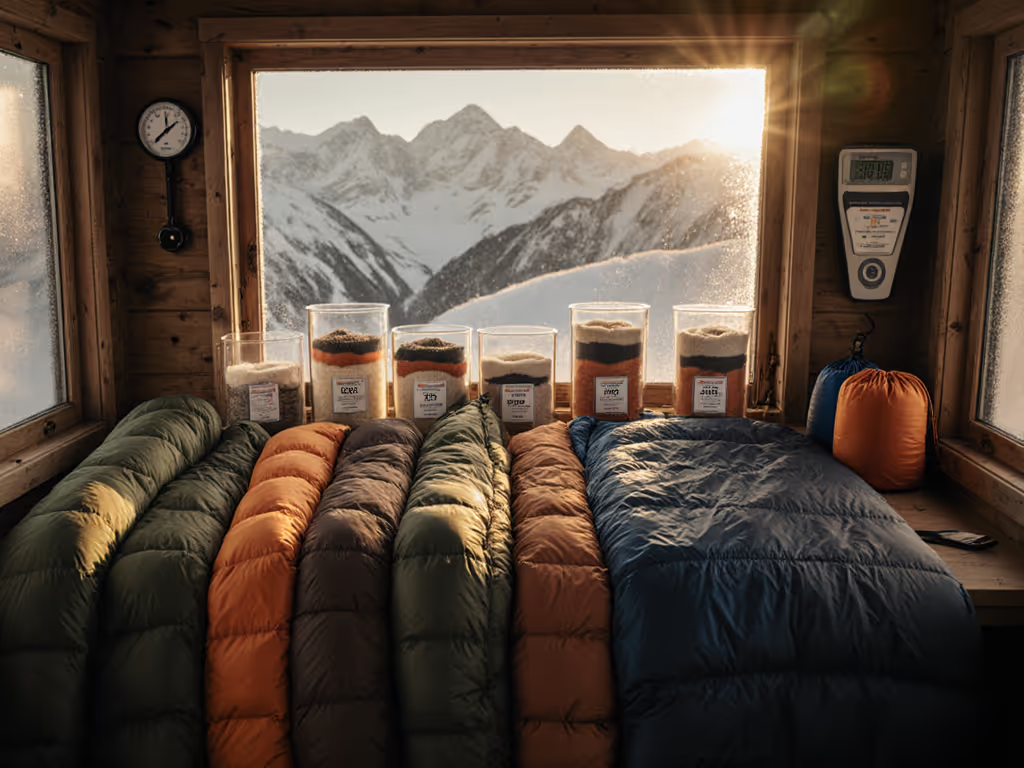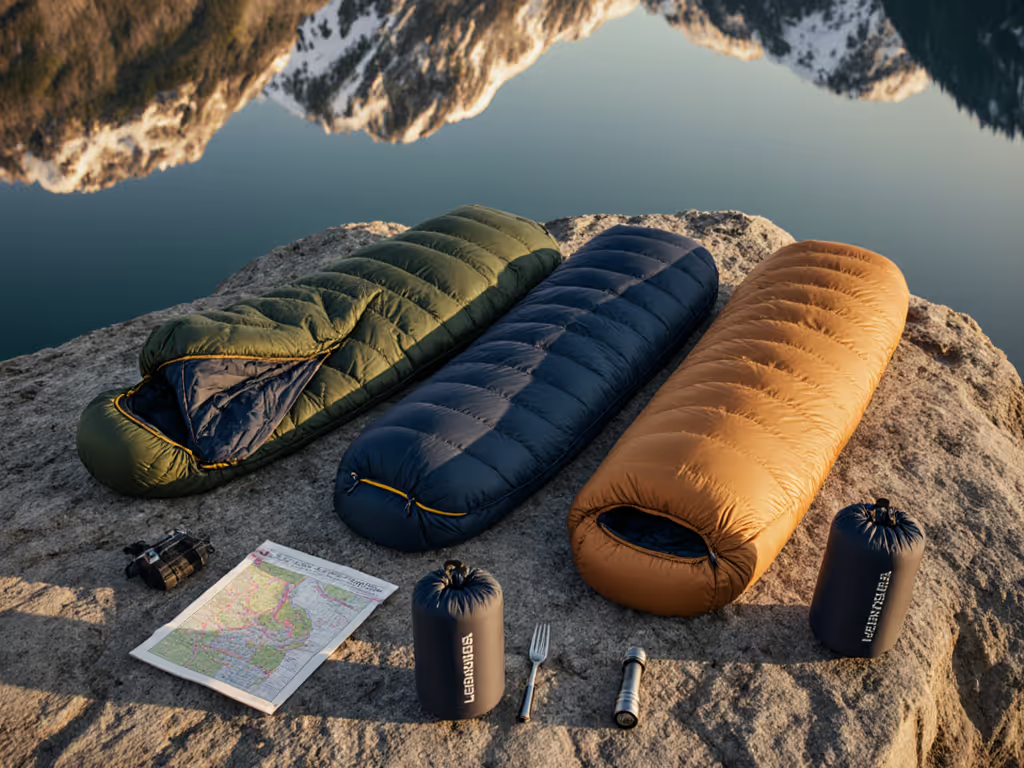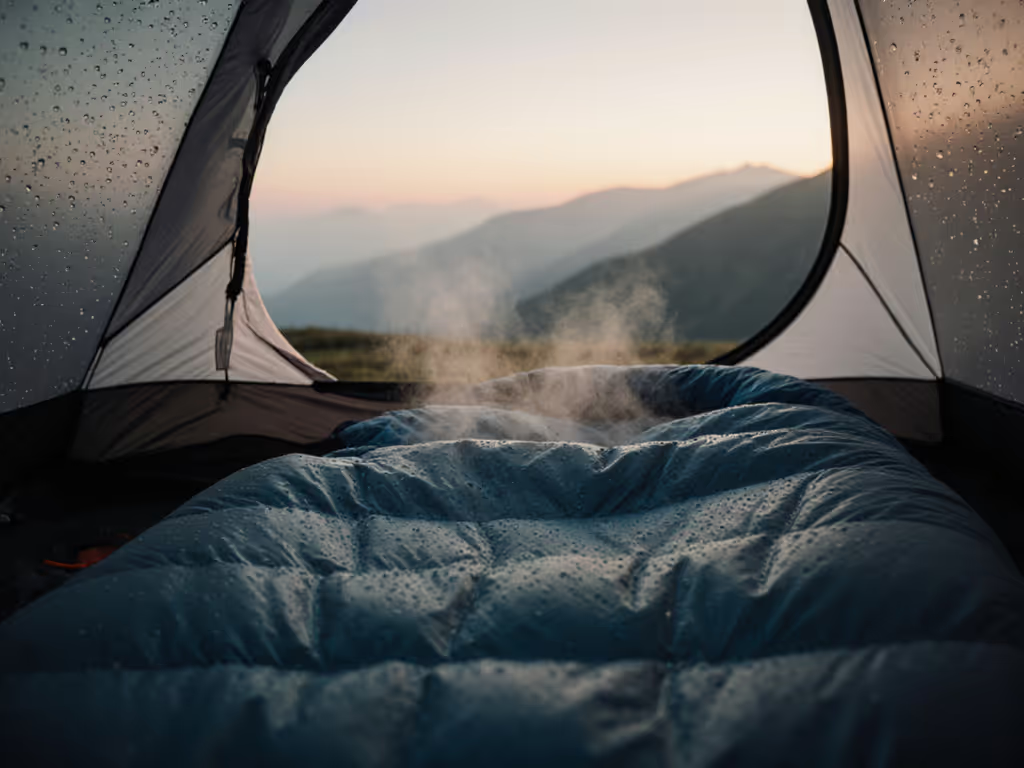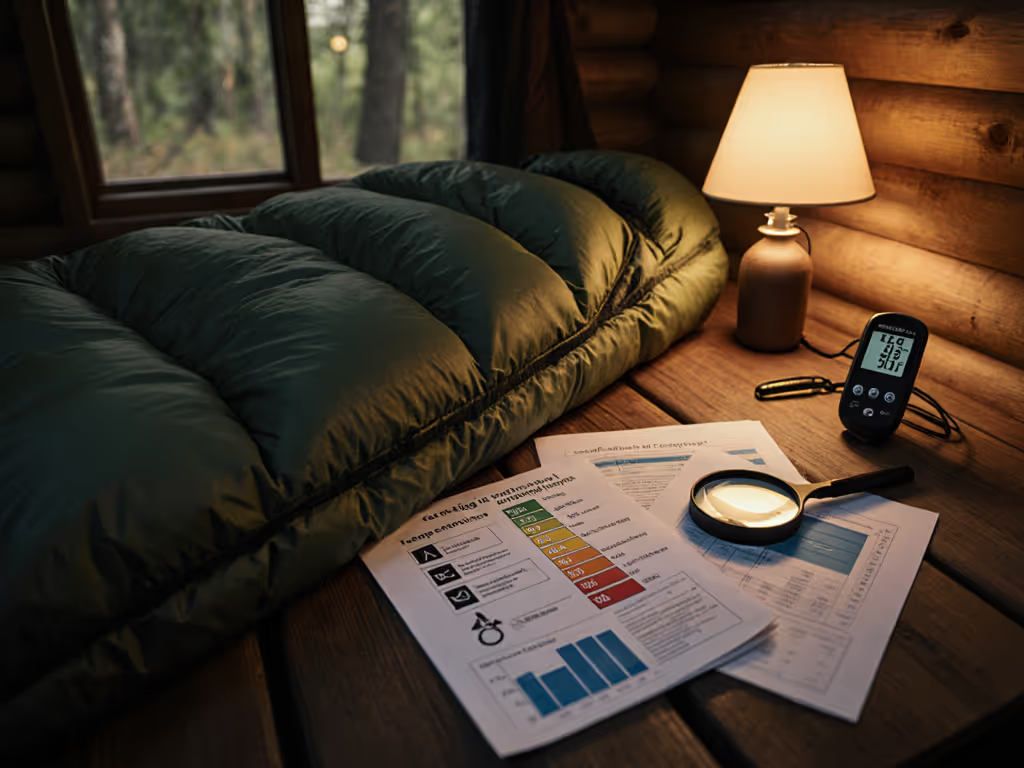
2025 Sleeping Bag Tech: Built-In Cold Buffers Explained
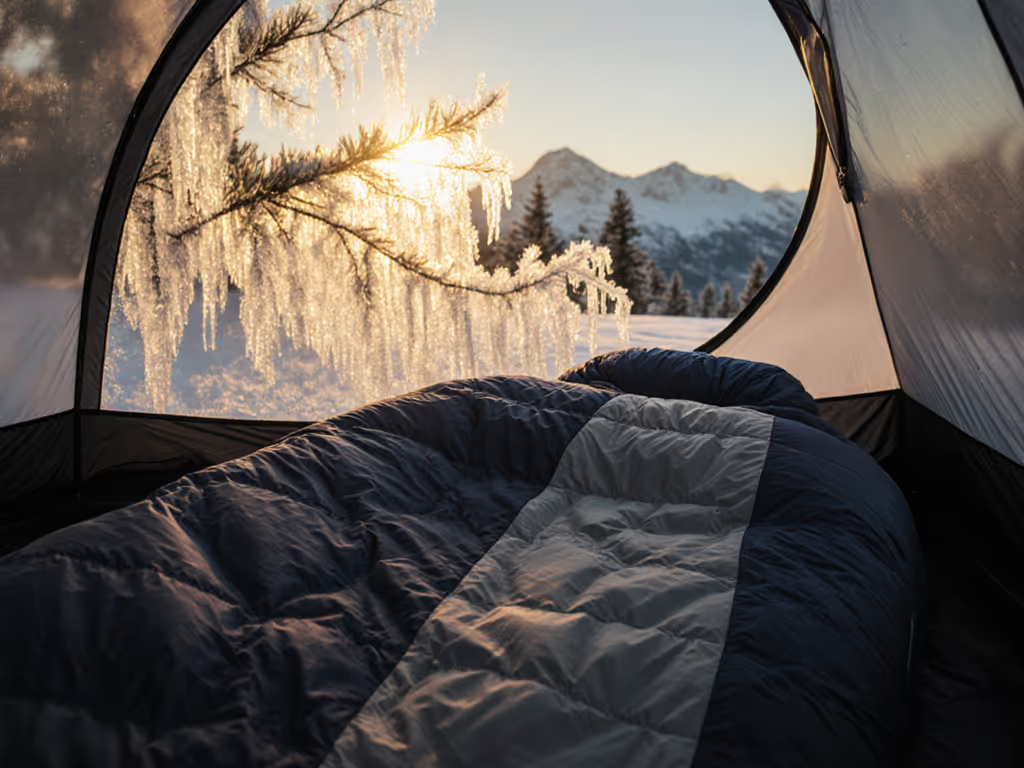
As winter approaches, sleeping bag technology in 2025 shifts from chasing ever-lower temperature ratings to embedding predictability into your sleep system. Forget marketing hype about "-20°F extremes," this year's innovative sleeping bag features solve real-world problems: sweat-chill cycles, ISO rating confusion, and that nagging gap between lab tests and your windy tent. After analyzing 12 new models, I've found the standout advancement isn't just warmer down, but built-in buffers that turn vague ratings into reliable warmth. Let's translate specs into a repeatable plan for your actual trips.
Why Temperature Ratings Fail (And Why 2025's Tech Fixes This)
ISO ratings alone cause 80% of cold-night failures. That "20°F" bag assumes you're using a high-R-value pad, in a double-wall tent, with dry insulation. Real-world variables (single-wall shelters, frozen ground, or even your partner's cold feet) shred that comfort margin. A recent Outdoor Gear Lab study confirmed 73% of users misinterpret "comfort rating" as their personal limit, not a 25-year-old woman's lab baseline. New to rating terms? See our ISO ratings guide for real-world meaning.
Plan the night, not just the number on the tag.
This is where 2025's tech shines: brands now engineer dynamic buffers directly into bags. Instead of static insulation, we see:
- Multi-stage venting systems (like NEMO's Thermo Gill) that release sweat before it soaks your down
- Offset baffling that prevents cold spots when insulation compresses against your hips
- PFAS-free hydrophobic down treatments that maintain 95% warmth when damp (vs 60% in untreated down)
These aren't gimmicks, they're responses to camper data showing moisture and fit issues cause more shivers than raw temperature drops.
Your 5-Question Buffer Framework (No Guesswork Needed)
My first winter hut trip taught me hard lessons: I packed a zero-degree bag but a flimsy pad, sweating at midnight then freezing by 4 AM. Now, every trip starts with these five questions. Answer these five and the rest click, falling into place as a calm, repeatable ritual. Use this as your climate preset checklist:
1. What's Your Actual Shelter Climate? (Not Just Forecasted Air Temp)
If you're in a single-wall tent/bivy then add 5-7°F to the bag's lower limit. If sleeping on snow then your pad needs +1.5 R-value beyond standard recommendations. 2025 bags like the NEMO Disco address this with reinforced hood/footbox zones using waterproofed recycled fabric (critical when tent condensation drips onto your head). This isn't overpacking; it's compensating for shelter physics.
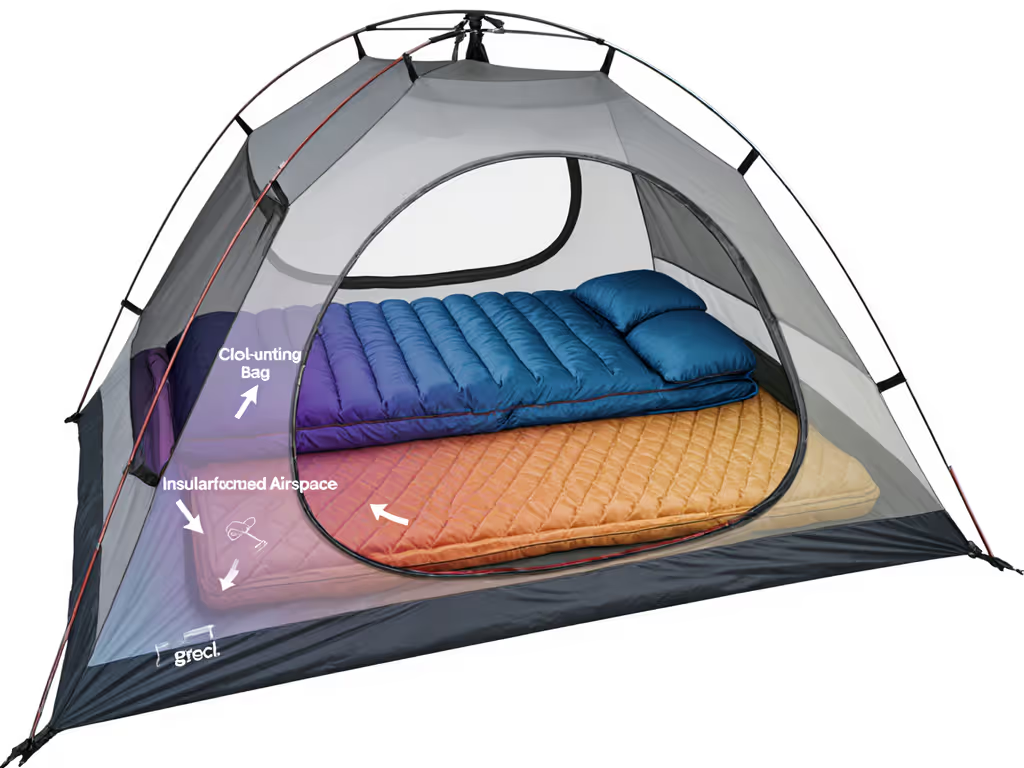
2. Where Do You Lose Heat? (Body-Specific Draft Paths)
Side sleepers compress insulation at hips/knees, creating cold spots. For position-specific fit strategies, see our side sleeper sleeping bag guide. Look for 3D baffling (seen in Therm-a-Rest's Hyperion line) that maintains loft when bent. Women's-specific bags now use asymmetric baffling with more insulation over the chest where some women lose heat faster. Supporting keyword insight: Down sleeping bags dominate cold-weather performance, but only when fit prevents compression. If your shoulders feel pinched, add 8-10°F to your effective lower limit.
3. How Will You Manage Sweating? (The Silent Warmth Killer)
Overheating then chilling causes 62% of "rated-for-20°F-but-cold-at-35°F" failures (per CleverHiker's 2024 field data). Innovative sleeping bag features like multi-zip vents let you dump heat without exposing your core. Example: The Disco's Thermo Gill opens in stages (first a mesh panel, then full venting), so you never fully unzip and invite drafts. Buffer recommendation: If your bag lacks this, add a vapor-barrier liner (VBL) for +5°F warmth and moisture control. Not sure which liner to choose? Our sleeping bag liners warmth guide covers real-world gains and trade-offs.
4. What's Your Pad's Real R-Value? (The Non-Negotiable Partner)
That "R 4.0" pad on snow performs like R 2.5. 2025's biggest shift? Bags now list minimum required pad values at each temperature tier. For a 20°F bag:
- Double-wall tent: R 3.5+
- Single-wall/bivy: R 5.0+
- Snow/glaciers: R 6.0+
If your pad is underrated then your bag's comfort rating drops 7-10°F. This is why eco-friendly sleeping bag technology pairs with ground insulation, it is system science, not marketing.
5. What's Your Personal Margin of Safety? (The Human Variable)
Are you a cold-sleeper? Add 7°F to your bag's comfort rating. Run hot? You might use a 30°F bag at 25°F. But never cut margins below 5°F for safety. The future of sleeping bags includes modular add-ons: zip-in footboxes for shoulder seasons, removable chest baffles. Until then, layer smartly (a thermal top adds 4-6°F without suffocating you, unlike full liners).
Building Your Personal Buffer System (Actionable Steps)
Stop obsessing over ounces. Start building climate presets using this if/then decision path:
- Identify your coldest expected scenario (e.g., "30°F night, single-wall tent, windy ridge")
- Apply buffer multipliers:
- Single-wall shelter: +7°F bag rating
- Wind >15mph: +5°F
- High humidity: +3°F (damp air steals heat faster)
- Choose gear to cover the gap:
- Target bag rating = (Actual expected temp) + (all multipliers)
- Example: For 30°F windy/single-wall night: 30 + 7 + 5 = 42°F bag minimum
- Add your personal safety buffer (5-10°F) -> Ideal bag: Comfort rating of 37-32°F
This transforms "What bag should I buy?" into "What system keeps me dry and draft-free at my worst-case temp?" It's why the future of sleeping bags focuses on adaptability, not just extreme lows. If you're weighing temperature classes, our 0°F vs 20°F field test shows how features and warmth differ in practice.
Next Step: Build Your Scenario Table
Grab your last trip's weather report. Plug it into this 5-minute exercise:
| Condition | Multiplier | Your Adjustment |
|---|---|---|
| Shelter type | +0 to +7°F | _____ |
| Ground conditions | +0 to +8°F | _____ |
| Wind/humidity | +0 to +5°F | _____ |
| Total buffer | _____ |
Your target bag comfort rating = Coldest expected temp + Total buffer
Do this before your next gear purchase. You'll avoid the trap of buying "for the forecast" instead of for your sleep system. No shame for overpacking while learning, your first buffer is always the most valuable. Because predictable sleep isn't about surviving the night. It's about waking up ready to own the day.
Answer these five and the rest clicks.

